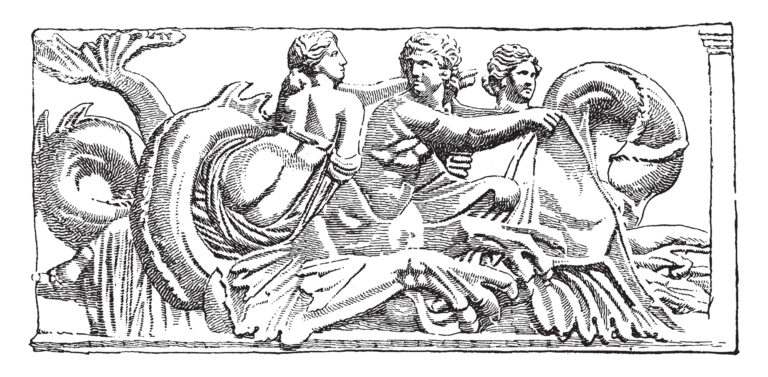The Cursed Black Stones of Crete
The legend of the Cursed Black Stones of Crete weaves a complex tapestry of mythology, superstition, and historical narrative deeply entrenched in the island’s rich folklore. This legend, involving mysterious black stones said to carry a curse, reflects the ancient and traditional beliefs of the Cretan people about the powers of nature and the supernatural.
Origins and Mythological Context
- Ancient Beliefs and Superstitions
- Prehistoric Roots: The belief in cursed stones dates back to prehistoric or early historic periods in Crete, where natural phenomena were often attributed to divine or supernatural causes.
- Integration with Greek Mythology: These beliefs may have integrated with Greek mythological themes, where objects could be imbued with magical or cursed properties.
- Description of the Black Stones
- Physical Characteristics: The black stones are often described as small, dark, and unassuming in appearance but are said to possess ominous energies or powers.
- Locations of Discovery: They are believed to be found in some regions of Crete, possibly in ancient sites, mountains, or near the sea.
The Nature of the Curse of the Black Stones
- Effects of the Curse
- Misfortune and Calamity: The curse associated with these stones is said to bring misfortune, illness, or calamities to those who possess them.
- Tales of Woe: There are anecdotal accounts and folklore that recount the stories of individuals who suffered after inadvertently taking these stones from their resting places.
- Cultural Interpretations
- Respect for Nature: The legend underscores a cultural respect for nature and a warning against disturbing sacred or historical sites.
- Moral Lessons: It also serves as a moral lesson about greed and the consequences of taking what does not belong to one.

Archaeological and Historical Perspectives
- Possible Historical Basis
- Artefact Misinterpretation: The cursed black stones could be misinterpreted as artefacts from Crete’s rich archaeological past, possibly from the Minoan or Hellenistic periods.
- Geological Explanation: Geologically, the stones might be naturally occurring volcanic rocks or minerals that were given mythical interpretations.
- Research and Study
- Lack of Scientific Evidence: To date, there is no scientific evidence to support the existence of a curse, though the stones may be of archaeological interest.
- Folklore Studies: The legend remains a subject of interest in folklore studies, reflecting the island’s rich storytelling tradition.
Sociocultural Impact and Modern Interpretations
- Folklore in Modern Times
- Continued Belief and Skepticism: In modern times, while some may continue to believe in the legend, others view it with scepticism, seeing it as a quaint relic of the past.
- Tourist Curiosity: The legend attracts tourists, adding to the mystical allure of Crete as a land steeped in myth and legend.
- Preservation of Folklore
- Oral Tradition and Cultural Heritage: Efforts to preserve these legends are crucial in maintaining Crete’s oral traditions and cultural heritage.
- Symbol of Cretan Identity: Like other Cretan myths, the legend of the cursed black stones symbolises the island’s unique cultural identity.

Conclusion
The legend of the Cursed Black Stones of Crete is a fascinating element of the island’s folklore, offering a window into the ancient beliefs and cultural psyche of the Cretan people. While possibly rooted in misinterpreted natural phenomena or ancient artefacts, the legend persists, symbolising the human inclination to imbue the natural world with mystical significance and as a reminder of the timeless allure of myth and superstition in shaping cultural narratives and identities.







